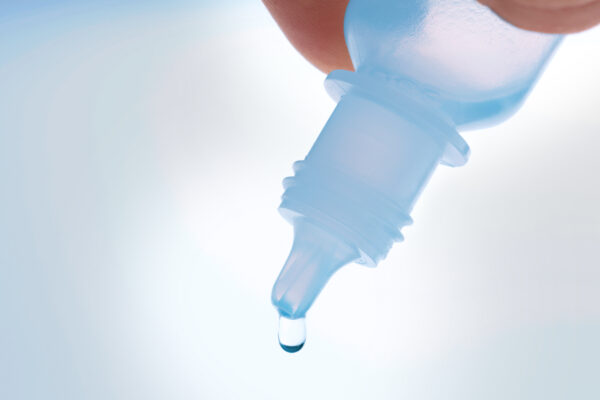
The Downsides to Regular Eyedrops Use
Managing Dry Eye Disease (DED) can be challenging, especially if a treatment or product causes additional issues. Eyedrops may seem like a quick fix for the irritating symptoms of DED, but this at-home treatment option can lead to further symptoms. Before you turn to a bottle of drops for Dry Eye relief, be sure that you know the potential risks involved.
Adverse Side Effects
Many people have experienced blurred vision after using eye drops. This issue can last several minutes, which may be inconvenient or dangerous if you need to work or operate a vehicle.
In addition, the overuse of eyedrops can actually wash away tears produced naturally, reducing the ability of the eyes to protect themselves.
Another potential problem is the risk of an allergic reaction. In rare cases, a reaction may occur. You should seek medical assistance immediately and discontinue use of the product.
Undetected Conditions
You might be one of the countless people who suffer from dry eyes, but who have not yet been diagnosed with a condition. Regular application of eyedrops could inhibit you from detecting an underlying health condition. The temporary relief of eyedrops can ultimately mask the symptoms associated with issues such as pet allergies and eye strain. Additionally, various eye conditions might go unidentified, including Dry Eye Syndrome (DES), which is another term used for Dry Eye Disease.
Contaminated Eyedrops
Unfortunately, contamination can occur. If the tip of the bottle touches a surface (including your eye), it could become contaminated. Once this happens, you could experience an eye infection when using these drops. This may be even more likely when you are using eye drops that contain no preservatives.
Preservatives in Eyedrops
To prevent infections caused by contamination, manufacturers often add preservatives to eyedrops. The problem here is that preservatives are chemicals that can exacerbate existing symptoms or cause new ones. If you apply eyedrops with preservatives several times per day, your eyes may become drier and redder than they were previously. In fact, the general recommendation is that such eyedrops not be applied more than four times daily.
Alternatives to Eyedrops
Fortunately, there are other dry eye remedies to treat Dry eyes at home. A good place to start is with supplements, which are easily accessible without a prescription. According to the Mayo Clinic, Dry Eye sufferers can find some relief by taking an omega-3 supplement. To promote overall eye health, it is vital to find a manufacturer that uses quality ingredients.
Another proven remedy is the application of a warm compress. This can alleviate the symptoms of DED. A warm compress is also helpful for those with Meibomian Gland Dysfunction (MGD). For more information on MGD, click HERE.
Eyelid massage might also be used to ease Dry Eye symptoms. You may find it beneficial to massage the eyes while applying a warm compress. In order to implement this technique safely, you should discuss the best practices of eyelid massage with your eye doctor.
Don’t Know How to Help Dry Eyes? EyeGiene® Can Help
If eyedrops are part of your current dry eye treatment program, remember to proceed with caution. Always discontinue their use if side effects occur.
If you are wondering how to help dry eyes, visit our website. EyeGiene® is a non-invasive choice for Dry Eye sufferers that treat the underlying condition rather than just the symptoms. Our supplements promote your long-term eye health. Our Insta-Warmth™ eye mask system with Warming Wafers provides safe, effective, and affordable relief from the symptoms of DED and MGD. You can get started by ordering a starter kit today!
Feel free to reach us via our convenient online contact form if you have questions.
